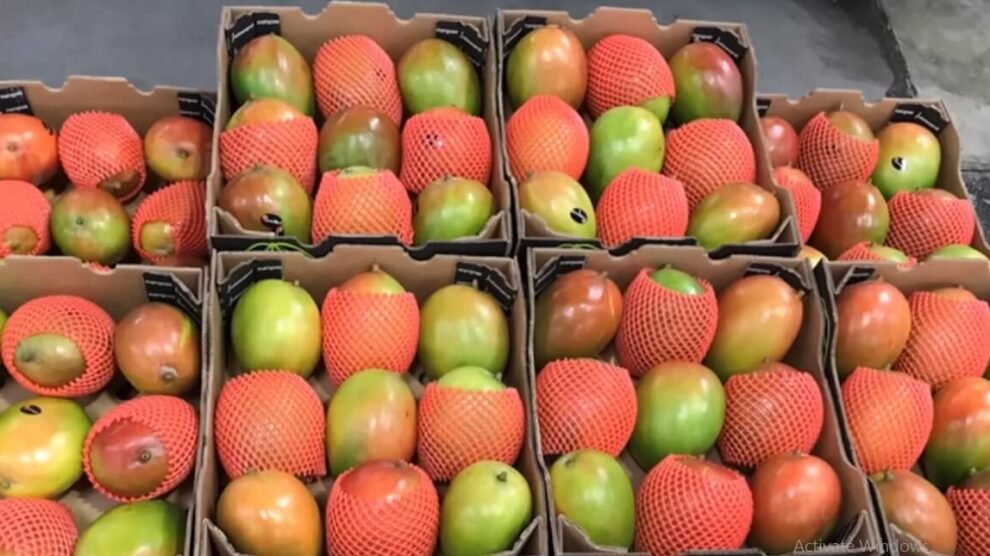The Misty month of March contributes to a bumper mango crop
Minimum temperatures in Sri Sathya Sai and Nandyal Districts ranged from 15°C to 17°C in the third week of March, resulting in a bumper crop yield.
Mango plantation work has been included in the Mahatma Gandhi National Rural Employment Guarantee Scheme (MNREGS) for the past 10 to 12 years, with positive results in the Anantapur and Kurnool districts.
In both districts, the number of hectares under mango cultivation has increased dramatically. The favorable soil and weather conditions have also contributed.
Also Read | Kolar farmers launch online portal for door-to-door mango delivery service
Last December, the weather conditions were favorable, resulting in early flowering and fruit set in the mango orchards.
The misty weather that prevailed in the first half of March this year was a pleasant surprise for mango farmers, as it allowed the trees to flower and set fruit for another period.
Minimum temperatures in Sri Sathya Sai and Nandyal Districts ranged from 15°C to 17°C in the third week of March, resulting in a bumper crop yield.
Benishan is the market leader in the SSS District
According to Horticulture Officer Chandrasekhar, Mango is cultivated across 21,000 hectares in the Sri Sathya Sai District, with around 50% flowering observed.
According to Mr. Chandrashekhar, the Benishan or Banaganapalli variety accounted for 95% of mango cultivation in the district.
This year, flowering and fruit sets occurred in three stages, and mango prices increased from ₹70,000 to ₹80,000 per tonne. According to Mr. Chandrashekhar, the average price was around ₹35,000 per tonne.
Anantapur district has had a successful year
Flowering was observed in 9,600 hectares this year, with approximately 70% of the area dedicated to growing the Benishan variety in the Anantapur district, according to B. Raghunath Reddy, Deputy Director, Horticulture. He adds that last year’s harvest was low, but this year’s harvest has made up for the losses.
Mr. Raghunath Reddy adds that mango was previously grown on over 41,000 hectares in the undivided district, with the Kalyandurg area producing the best quality fruit in the district.
While spraying the fruits with ethylene in closed rooms is allowed, Horticulture Department officials have asked traders not to use carbide for artificial ripening.
Growers typically lease orchards to traders for three years as soon as flowering begins, with the expectation that even one good year will compensate for two bad years.
Growers are pleased with this year’s yield and claim to have made a profit even after deducting losses from the previous year.
Nandyal district’s on-year crop
According to Nandyal District Horticulture Officer Nagaraju, 2023 saw a ‘on-year crop,’ which means that more than 50% of trees bloomed.
Also Read | Karnataka mango lovers have reason to hope if dry, cold weather lasts till April
According to him, the crop was grown on 7,000 hectares in the district this year, and the maximum and average price of the predominant Benishan variety fruit in the district were ₹80,000 per tonne and ₹40,000 per tonne.
‘Mango trees between the ages of 16 and 21 years produce the highest yield, with trees over 35 years producing the least.’ ‘There will be no yield for the first five to six years,’ Mr. Nagaraju predicts.
This year’s average yield for the Benishan variety was 3 to 4 tonnes per hectare. Late-season varieties such as Neelum, Daseri, Himayet, and Amruthalu (Rasalu) will likely have lower yields this year, according to him.


















Add Comment